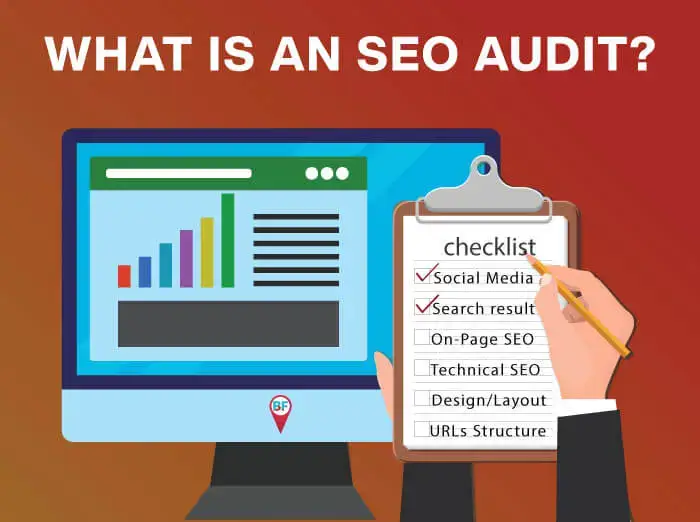
Conducting an SEO audit is a crucial step in maintaining and improving your website’s performance in search engine rankings. An SEO audit helps you identify areas that need improvement, uncover issues that might be hurting your rankings, and ensure that your website is fully optimized for both search engines and users. In this comprehensive guide, we’ll walk you through a detailed SEO audit checklist to help you boost your website’s performance and discuss how tools from Sitelinkpro can support your optimization efforts.
1. Analyze Your Website’s Technical SEO
Technical SEO forms the foundation of your website’s performance in search engines. Ensuring that your site is technically sound is the first step in any SEO audit.
Key Areas to Check:
- Crawlability: Ensure that search engines can easily crawl your website. Check your robots.txt file to make sure it’s not blocking any important pages from being indexed.
- XML Sitemap: Verify that your XML sitemap is correctly formatted and submitted to Google Search Console. This helps search engines understand your site’s structure.
- Site Speed: Page load speed is a critical ranking factor. Use tools like Google PageSpeed Insights to identify and fix issues that may be slowing down your site. Compress images using tools like Sitelinkpro’s PNG to JPG converter to reduce file sizes without compromising quality.
- Mobile-Friendliness: With mobile-first indexing, it’s essential that your website is fully responsive and optimized for mobile devices. Test your site on multiple devices to ensure a seamless user experience across all platforms.
2. Conduct an On-Page SEO Audit
On-page SEO focuses on optimizing individual pages to rank higher and earn more relevant traffic. This includes elements like content, keywords, meta tags, and user experience.
Key Areas to Check:
- Title Tags and Meta Descriptions: Ensure that each page has a unique, keyword-rich title tag and meta description. These elements play a significant role in click-through rates (CTR) from search results.
- Keyword Optimization: Review your content to ensure that it is optimized for your target keywords. However, avoid keyword stuffing; focus on creating valuable, informative content that naturally incorporates relevant keywords.
- Content Quality: High-quality content is essential for SEO success. Ensure that your content is informative, engaging, and free of grammatical errors. Use Sitelinkpro’s English dictionary to polish your content and improve readability.
- Internal Linking: Check your internal links to ensure they are correctly placed and help users navigate your site effectively. Internal links also help distribute page authority across your site.
- Image Optimization: Ensure that all images have descriptive alt text and are optimized for fast loading. Use Sitelinkpro’s remove image background tool to create clean, professional images that enhance user experience without slowing down your site.
3. Evaluate Off-Page SEO Factors
Off-page SEO refers to actions taken outside your website to impact your rankings within search engine results pages (SERPs). This mainly involves building backlinks from other reputable sites.
Key Areas to Check:
- Backlink Profile: Analyze your backlink profile to ensure that you are getting high-quality links from authoritative sites. Tools like Ahrefs or Moz can help you assess your backlink quality.
- Social Signals: Social media activity can indirectly affect your SEO performance. Ensure that your content is being shared and engaged with on social platforms to boost visibility and credibility.
- Competitor Analysis: Compare your off-page SEO efforts with those of your competitors. Identify gaps in your backlink strategy and find opportunities to build more high-quality links.
4. Check User Experience (UX) and Design
User experience is a crucial factor in SEO. A well-designed, easy-to-navigate site keeps visitors engaged and reduces bounce rates, which can positively impact your rankings.
Key Areas to Check:
- Navigation: Ensure that your website is easy to navigate. Users should be able to find what they’re looking for with minimal clicks.
- Design: A clean, professional design enhances user experience. Use tools like Sitelinkpro’s remove image background to create visually appealing images that complement your design.
- Mobile UX: Test your site on mobile devices to ensure that it provides a seamless experience. Mobile-first indexing makes this a critical component of your SEO audit.
5. Monitor and Improve Website Performance
SEO is an ongoing process, and regular monitoring is essential to maintaining and improving your website’s performance.
Key Areas to Check:
- Analytics: Regularly check your website’s analytics to monitor traffic, bounce rates, and other key metrics. Use this data to identify areas for improvement.
- SEO Tools: Utilize tools like Google Search Console, SEMrush, and Moz to track your SEO performance and uncover any issues that need addressing.
- Content Updates: Regularly update your content to keep it fresh and relevant. This not only improves SEO but also enhances the user experience.
Conducting a thorough SEO audit is essential for improving your website’s performance and maintaining strong search engine rankings. By following this comprehensive SEO audit checklist, you can identify and fix issues that may be holding your site back, optimize your on-page and off-page SEO efforts, and ensure a positive user experience. Tools from Sitelinkpro, such as the PNG to JPG converter, English dictionary, and remove image background tool, can further support your SEO efforts by helping you create high-quality, optimized content and visuals. Embrace these strategies to enhance your website’s performance and achieve long-term SEO success.



